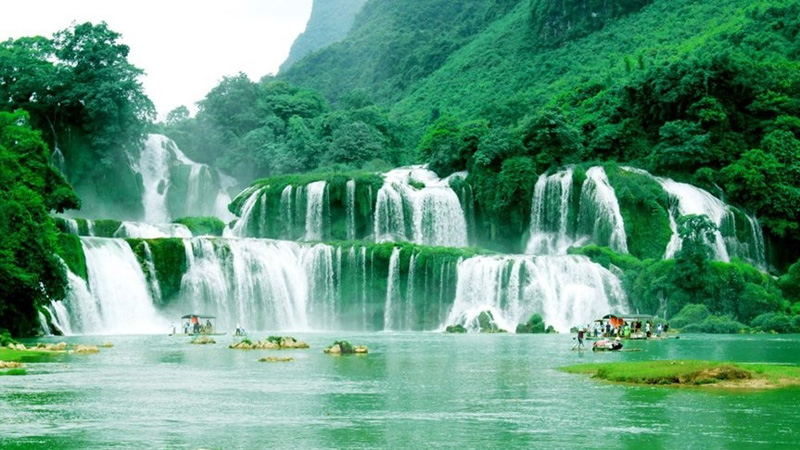


|
Ban Gioc waterfall, a famous tourist attraction located inside the Non Nuoc
Cao Bang Geopark
The decision was made under a resolution approved by the UNESCO
Executive Board during its 204th session held in Paris, France on April 12
(local time).
Covering a total area of more than 3,270 square kilometres and
spanning nine districts of Cao Bang province, Non Nuoc Cao Bang Geopark is
home to more than 250,000 people from nine ethnic minority groups.
The Geopark occupies an exceptional territory with various
classic karst landforms, subterranean and surface rivers, lake systems,
pillow basalts, and ultramafic and granitic intrusions.
The area’s sedimentary rocks date from 500 million years ago,
with stratotype cross-sections, and fossils indicating different
paleo-environments and biosphere extinction events.
The Geopark is known as a land of beautiful tourist sites, and
cultural and historical vestiges but is also a cradle of the Vietnamese
revolution during the national resistance war against the French.
Vietnamese Deputy Minister of Foreign Affairs Le Hoai Trung said
the Global Geopark title is UNESCO’s recognition of the diverse landscapes
and spiritual cultural values of the Non Nuoc Cao Bang area. It will also
help the province to boost its sustainable socio-economic development and
improve local living standards.
During the dossier verification process, Ambassador Tran Thi
Hoang Mai, head of Vietnam’s Permanent Delegation to UNESCO, said that UNESCO
experts highly regarded the values of the Non Nuoc Cao Bang Geopark.
The areas are managed with a holistic concept of protection and
sustainable development, while having significant impacts on the local
communities’ sustainable socio-economic development.
Non Nuoc Cao Bang was established in 2015. Since then, the local
authorities, departments, sectors, and community worked closely with the
Vietnam National Commission for UNESCO and the Ministry of Natural Resources
and Environment to compile and submit a dossier to UNESCO in November 2016 as
they sought its recognition.
Concurrently, the local authorities have drafted plans and taken
actions to protect the environment, natural resources, and biological
diversity as well as the cultural and historical value of the site, while
promoting tourism in a sustainable manner.
|
Source: NDO